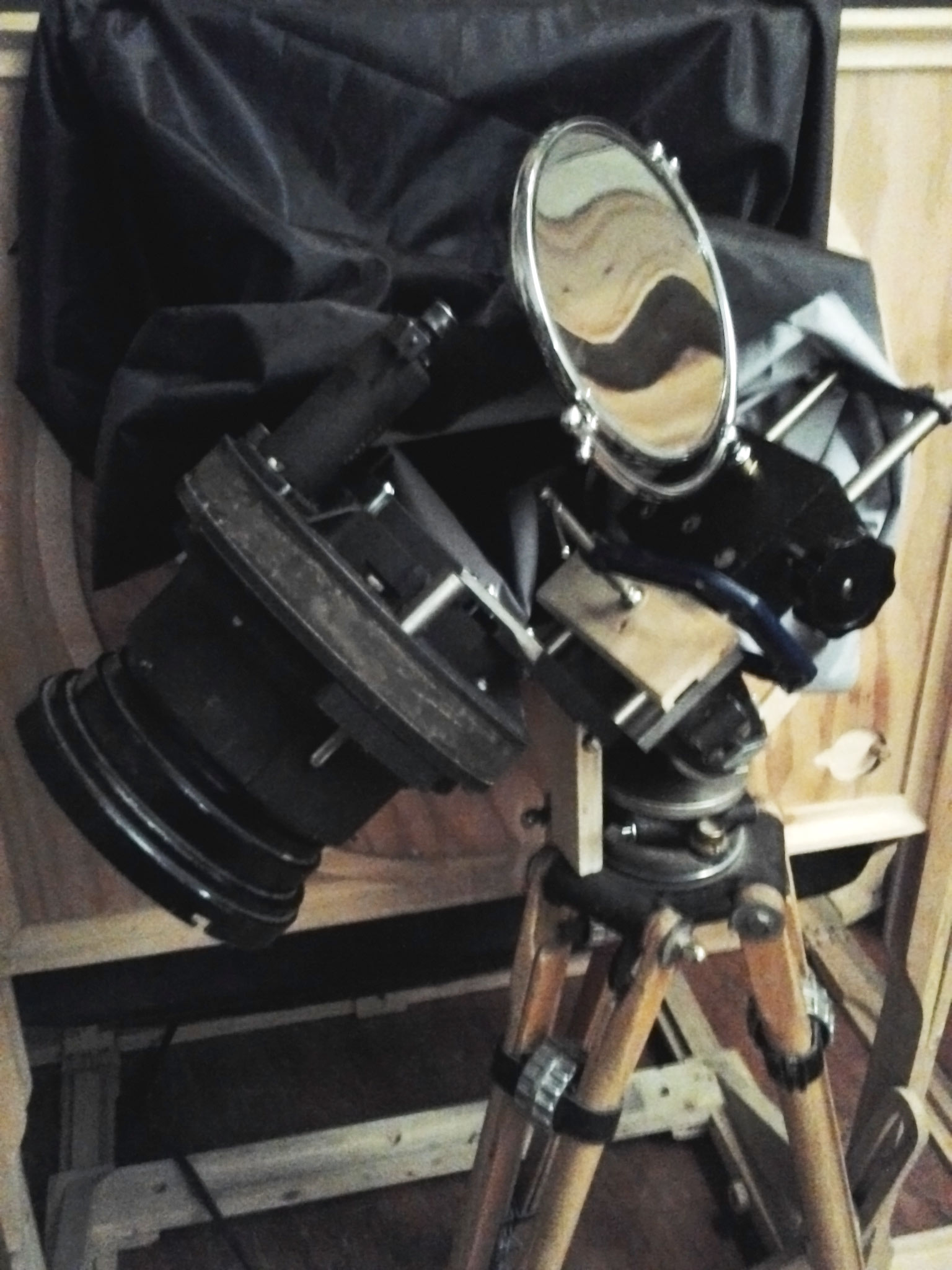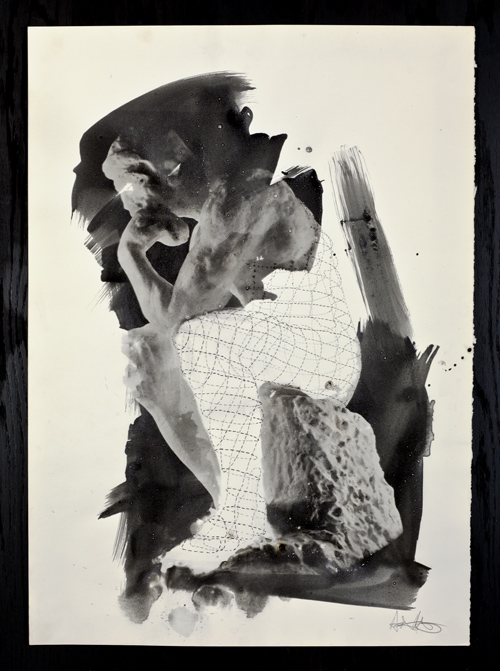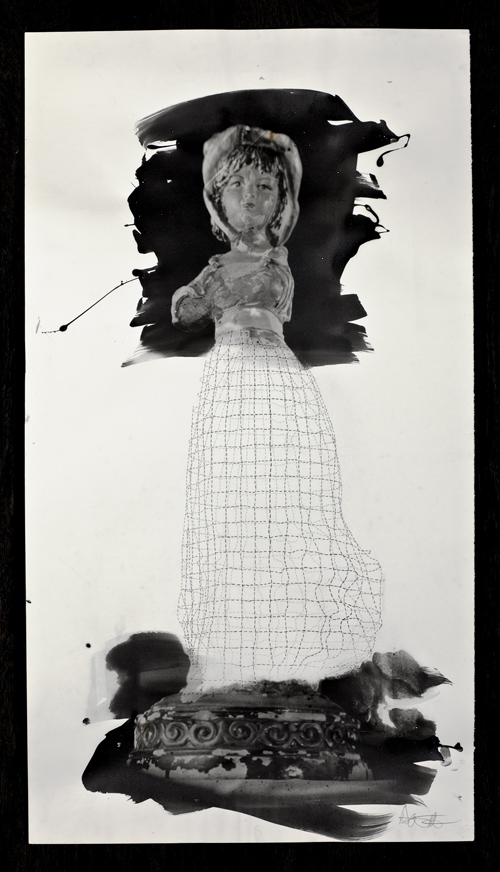Click here to view all of the images created in this series …

This machine was created to enable the creation of a series of images that recorded shape directly. The initial idea was to create a device that would facilitate the superimposition of a grid onto an object such that a computer mesh style representation of its shape could be recorded directly through drawing via a camera obscura. In essence photographing shape and space directly rather than a surface projection.
After some experimentation it became apparent that in order to record and communicate the form of an object via a ‘wireframe’ rendering it would be necessary to view the object from and oblique angle with respect to the superimposed grid. In addition the grid needed to wrap from the front to the back of the object to relate the depth of the rendered form. In essence i would need to be able to see through the object to communicate the shape of an object from a single perspective point.

The ability to view the sculptures from an oblique angle was made possible by introducing a mirror between the lens and the front of the camera this enabled the lens to be oriented in relation to the subject without needing to move or tilt the camera obscura.

In-order to ‘see through’ the sculptures and record the shape of front and the back the sculptures from a single camera position, a plaster cast mold was made of the back of each sculpture.
The apparatus was then used to shine both horizontal and vertical laser lines on the sculpture revealing where a given projection plane would intersect the surface of the object. The machine allowed for the mechanically reproducible positioning of the laser and its respective intersection plane at incremental vertical intervals (horizontal lazer) and incremental angles around a concentric point (vertical laser). the position of the laser was then transferred to the surface of the object using acrylic ink.

Positioning the sculptures in front of the camera allowed for them to be recorded photographically and as well by climbing inside the camera obscura the lines of the grid could then be recorded with pencil on paper, first recording the grid from the front of the sculpture in conjunction with the photographic process and subsequently from the plaster cast which was positioned behind the sculpture before it was removed.


This created a conventional photographic paper negative and a drawing of the wireframe shape-grid.

Once the sculpture had been photographed and it shape had been recorded via drawing the photograph was then ‘contact’ printed on-top of the drawing using liquid light.


Click here to view all of the images created in this series …
